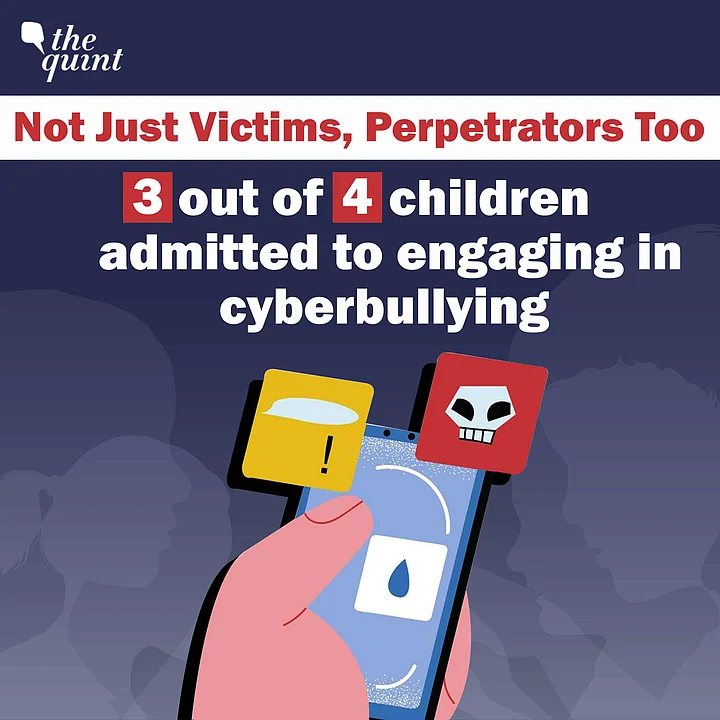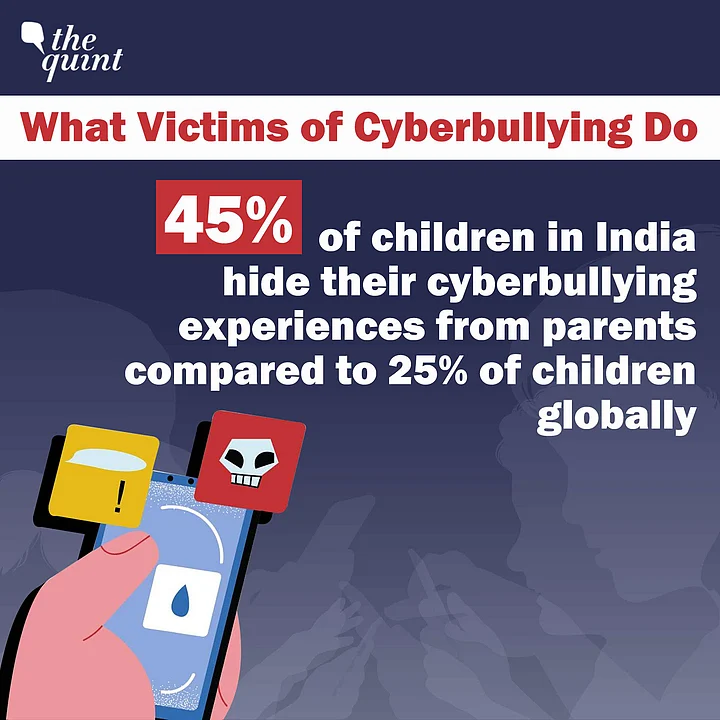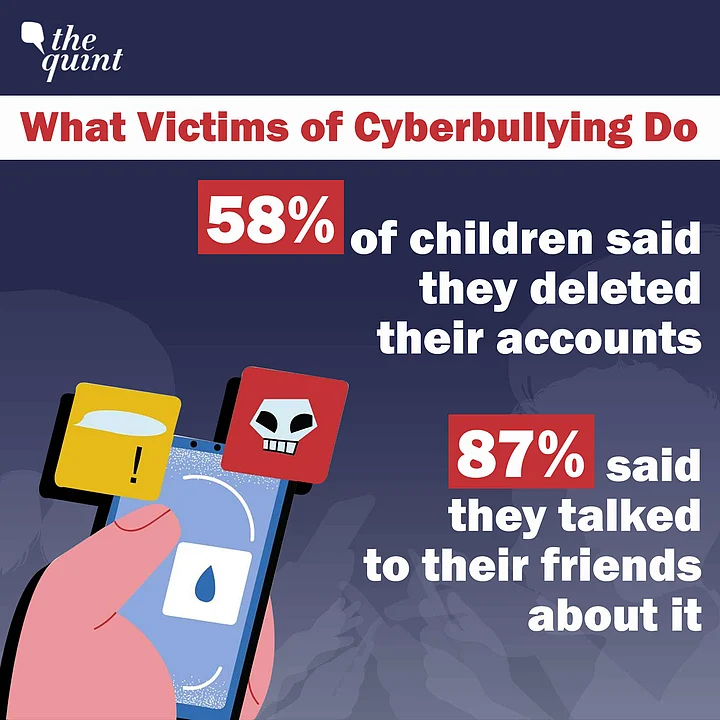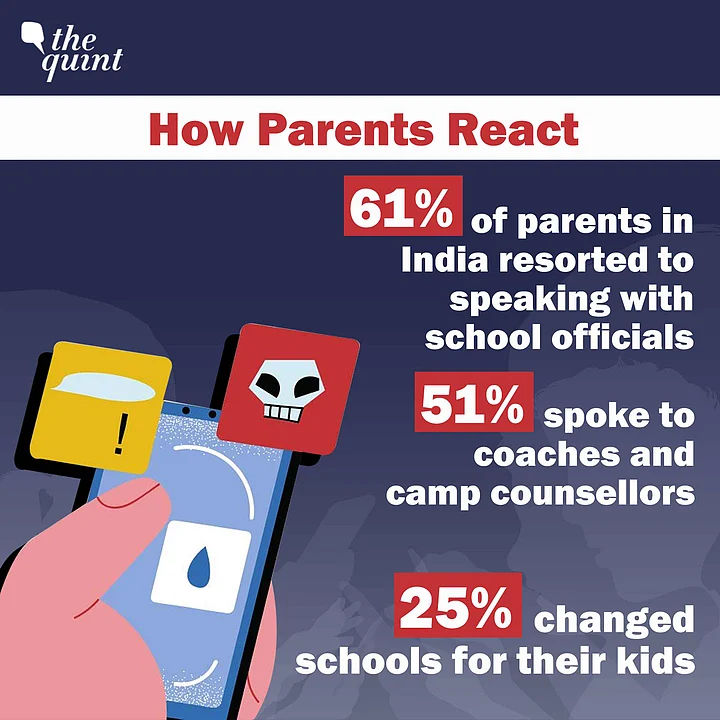Video Producer: Mayank Chawla
Video Editor: Harpal Rawat
Bullying on the internet is not a new phenomenon. Various surveys have shown that children in India are at risk of falling prey to bullies online, and that can have a lasting impact on their mental health.
But what is the extent of cyberbullying in India? Are children participating in cyberbullying, too? And how are parents reacting to these cases? A survey finds out.
A McAfee report titled 'Cyberbullying in Plain Sight' revealed that 85 percent of surveyed children in India have been victims of cyberbullying, the highest in the world. The survey also found that three out of four children in India have engaged in cyberbullying.
The global security software company surveyed 11,567 participants in the age group 10-18 years across 10 countries.
What Constitutes Cyberbullying?
Cyberbullying is the use of electronic communication to bully a person, typically by sending messages of an intimidating or threatening nature.
Severe forms of cyberbullying, such as sexual harassment, threats of personal harm, trolling, doxing, name-calling, spreading false rumours, and being excluded from groups and conversations, have also been included in this study.
Racism, Sexual Harassment Highest in India
The survey found that India has the highest rate of racist cyberbullying in the world. As many as 42 percent of Indian children have been the victims of racist cyberbullying, which is significantly higher than the rest of the world at 28 percent.
In its most extreme forms, cyberbullying in India was reported almost twice as high as the international average. Here's a comparison between India and the global numbers.
An age-based analysis of data shows that younger children are more susceptible to cyberbullying. The lack of awareness at younger ages could be a factor here.
One in three kids faces cyber-racism, sexual harassment, and threats of physical harm as early as the age of 10.
Moreover, young girls in India routinely find themselves targeted for sexual harassment and threats of personal harm. These rates are some of the highest internationally, with girls 10 to 14 at 32 percent and girls 15 to 16 at 34 percent. However, this figure drops significantly at ages 17 to 18, down to 21 percent.
The Perpetrators
The issue is equally worrying with regards to the perpetrators of cyberbullying. The report stated that three out of four Indian children say that they have cyberbullied someone else.
Parental Involvement
Another part of the survey looked at how parents responded to such cases and whether these response patterns discouraged children from confiding in their parents.
The survey found that Indian children are more likely to hide their cyberbullying experiences from their parents.
- 01/03
Indian children are more likely to hide their cyberbullying experiences from their parents.
Photo Credit: The Quint

- 02/03
Quite often, children address these issues by themselves.
Photo Credit: The Quint

- 03/03
Parents are more likely to resort to external resources.
Photo Credit: The Quint

"Parents are displaying important gaps of knowledge around cyberbullying, but even more concerning, children aren’t considering behaviours like jokes and name-calling harmful online. Our mission with this research is to inform parents and families of what children are experiencing online and then empower parents to act where appropriate."Gagan Singh, Chief Product Officer, McAfee
This also means that a lot of times, children address these issues by themselves, which involves either deleting a social media account to avoid cyberbullying (58 percent) or talking to their friends about it (87 percent). The global average for both these statistics are 33 percent and 25 percent, respectively.




